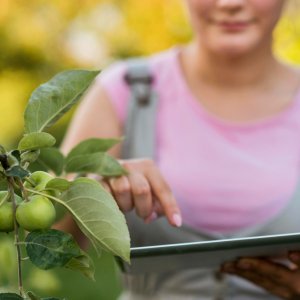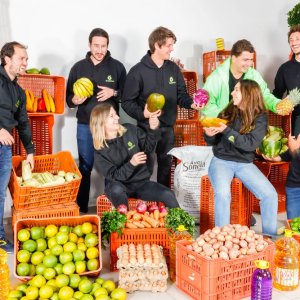Empowering Women Farmers to Contribute to Food Security

STORY INLINE POST
In recent years, agriculture has faced significant challenges in different areas, including climate change, poor access to finance and insufficient use of technology as well as constant political, economic, and social phenomena.
One of the most important challenges facing governments, companies and producers is to produce enough food for the more than 800 million people in the world who suffer from hunger. Farmers, on the other hand, strive to produce more food, with higher quality standards; however, not everyone has the same opportunities and resources to do so. The playing field becomes more uneven when the conditions under which men and women work are thoroughly analyzed.
The Food and Agriculture Organization of the United Nations (FAO) estimates that women in rural economies make up almost 50 percent of the planet's agricultural labor force. Despite their importance in this activity, they have benefited the least from the resources available to help them improve their working conditions and increase the amount of food they produce.
This is even more noticeable in developing countries. FAO's study, The State of Food and Agriculture, points out that constant discrimination causes farmland that is managed by women to be 30 percent less productive than farmlandmanaged by men. This has limited their development for years, either because of their poor education or because of the barriers they face in marketing their crops.
In fact, the Study on Women in Agriculture, conducted by Corteva Agriscience in 2018, identified three barriers to women competing on equal terms with their counterparts: lower wages, less access to finance and virtually no training. More than 90 percent of participants said that while they were proud to work in the agricultural industry, that pride did not necessarily translate into happiness or satisfaction due to gender inequality.
If they receive the same support and opportunities that men get, women farmers' production would be equal to that of men. It is estimated that if women's agricultural production were increased, global hunger would be reduced by 17 percent.
Putting the Tools at Their Fingertips
While discrimination is diminishing, it is not enough to allow women to produce at the same level as their male counterparts. There are still lags in key areas: access to agricultural inputs, tools and technology, land rights and ownership, climate change, access to water, education and training.
Supporting women can be an effective solution to increasing agricultural production and feeding a growing world population. And their role becomes more important in a context where food security continues to decline.
In its 10th edition, the Global Food Safety Index (GFSI) reports a significant decline in this area for the second consecutive year. The main factors that have influenced this decline include affordability, availability, quality, and safety as well as natural resources and resilience.
One thing worth noting about the report is that although countries have made significant progress in their fight against food insecurity in the past decade, food systems remain vulnerable to economic, climate and geopolitical crises. These include the COVID-19 pandemic, worsening factors related to climate, nutrition, food price volatility, and low government investment in agriculture.
This report by Economist Impact highlights that, while food safety plans are essential, practical solutions must be implemented on a local scale. It adds that where the most aid is needed are the rural areas of Africa, Asia and Latin America, regions where smallholder farmers predominate and there are high levels of poverty and hunger. Therefore, development programs are vital to provide the resources needed to boost local food security.
The Driving Force
It is well known that women are the driving force behind agriculture in many emerging and developing communities. Many organizations aware of this actively and continuously support them. For example, Corteva Agriscience analyzed the concerns of the more than 4,000 producers from 17 countries that participated in the Study on Women in Agriculture and, with that information, has created different strategies and carried out actions to help rural women advance in some of the areas of greatest impact.
The GFSI 2021 report highlights the need for agricultural innovation, an area in which the role of women has great potential to address critical issues, such as the threats to agricultural production posed by climate change and the scarcity of natural resources; the demand for not only more food, but also nutritious food as well as more responsive food supply chains; and the potential of innovation and technology to improve the sustainability of agriculture.
There is still much to be done for women's empowerment. Hence the importance of placing special focus on optimizing the way in which technical assistance and training are provided to them so that they maximize the use of technology, support them in their fight against discrimination, improve their access to education and finance, help them achieve a work-life balance, and finally, and not less importantly, to promote the importance of women in agriculture and the impact of their success on food security.
























